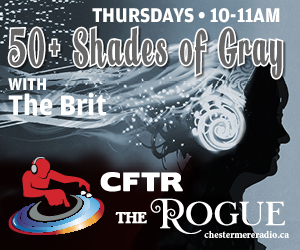Taking advantage of what might be the last sunny weekend before autumn, I gathered with the usual suspects in my backyard to observe Port Wine Day on September 10, which marks the 268th anniversary of the Douro Valley being designated as a protected wine region, way back in 1756.
Much like “Real Champagne” only comes from the Champagne region of France, “Real Port” only comes from the Douro Valley region of Portugal, legally known as the Douro Demarcated Region for labeling purposes.
Port takes its name from the Portuguese city of Oporto, situated at the mouth of the Rio Douro (that’s River of Gold to you Canucks).
The Portuguese had been producing mediocre wines in the region for centuries, but the switch to fortified Port wines began in 1678, when Britain declared war on France. Unfortunately for the wine-loving Brits, the sea blockade of French ports cut off the supply of French wines, so the English looked to Portugal as an alternate source.
Sadly, the Portuguese had not been quite so gung-ho about wine production as the French, so the first shipments of wine sent back to England from Portugal were not well received.
Portuguese wines didn’t really take off in England until a few crafty wine merchants in the city of Oporto dumped a few buckets of grape brandy into the wine barrels before shipping it off across the water. This apparently made the difference, as the British palate found this unholy mixture to be mostly tolerable, but still not as good as the French wines.
Demand for Portuguese wines rose and fell along with the warming and cooling of relations between Britain and France. Early in the 1700’s, Britain and Portugal signed the Methuan Treaty, which drastically reduced the import duties on wines shipped from Portugal to England. This caused the port trade between the two countries to grow rapidly, with many British liquor barons setting up branch offices and production facilities in Portugal.
Port is referred to as a fortified wine, due to the unique fermentation processes used. The grape fermentation is stopped when the wine reaches its ideal sweetness by adding approximately one litre of grape brandy for every seventeen litres of wine. This will result in a final alcohol content of 19-22%.
After the brandy is added to the wine, the mixture is transferred to large wooden casks to be aged in the cellars along the Douro River. The mild temperatures of the region are ideal for prolonged and slow aging.
While aging in wood, Port wine’s fruity aroma develops through oxidation to create a bouquet that is reminiscent of dried fruit, toasting, wood, and spices. The aging process also adds to its smoothness, rendering the bouquet harmonious and more complex.
There are a number of different types of Port, each with its own color and sweetness.
Ruby Ports are darkly colored younger blends, usually about two years old. Tawny Ports are lighter in color, and have generally been aged in casks for at least four years.
Port is frequently served with Stilton cheese; the sharp taste of the cheese and the strong taste of the Port make an excellent combination. Another common combination involving food and Port wine is a young vintage with a rare steak. The proteins of the meat make the wine a little lighter. A young Tawny goes also goes well with stilton cheese or Fois Gras. Aged Port wines combine very well with desserts.
Newer Port drinkers should generally start with a tawny Port – they are relatively inexpensive, and provide an excellent introduction to Port drinking. Tawny Ports of very good quality are often sold with an indication of the time they have spent in the cask, ranging 10, 20 or 30 and even 40 years.
My favorite tawny port is from the ever-popular Taylor Fladgate. Produced at a vineyard that has been operating for over 300 years, they’ve had plenty of time to perfect their craft. It’s a very popular brand, so look for it at your favorite watering hole or liquor retailer.
Any Port in a Storm

In response to Canada's Online News Act and Meta (Facebook and Instagram) removing access to Canada's local news from their platforms, Anchor Media Inc encourages you to get your news directly from your trusted source by bookmarking this site and downloading the Rogue Radio App. Send your news tips, story ideas, pictures, and videos to info@anchormedia.ca.






